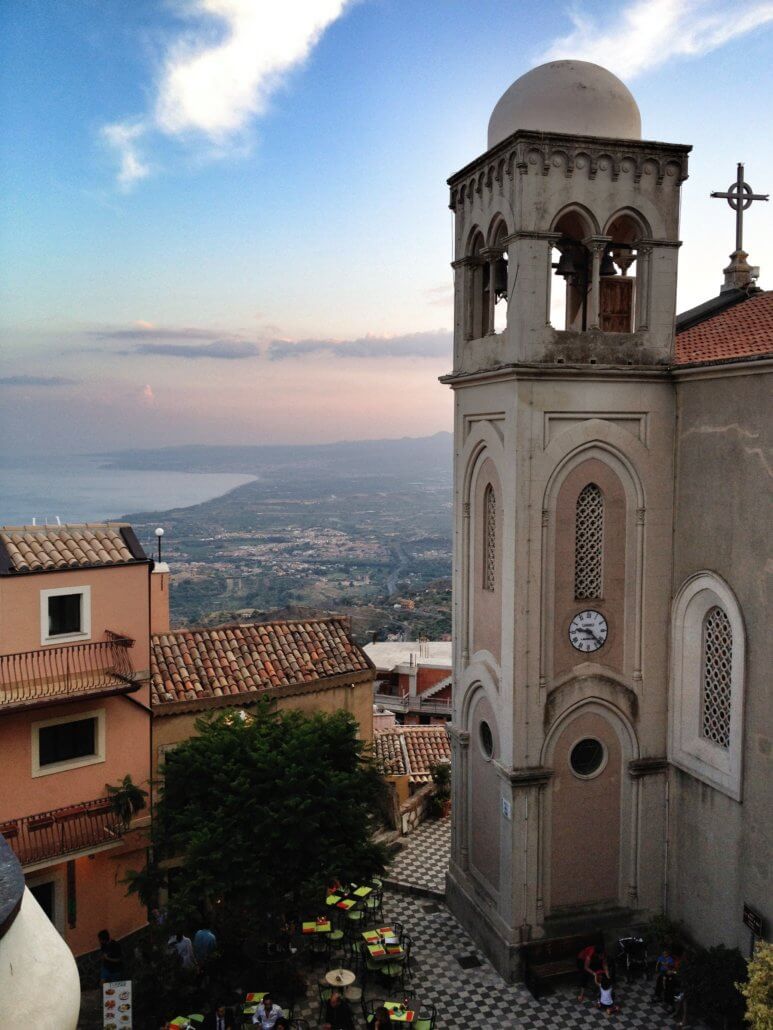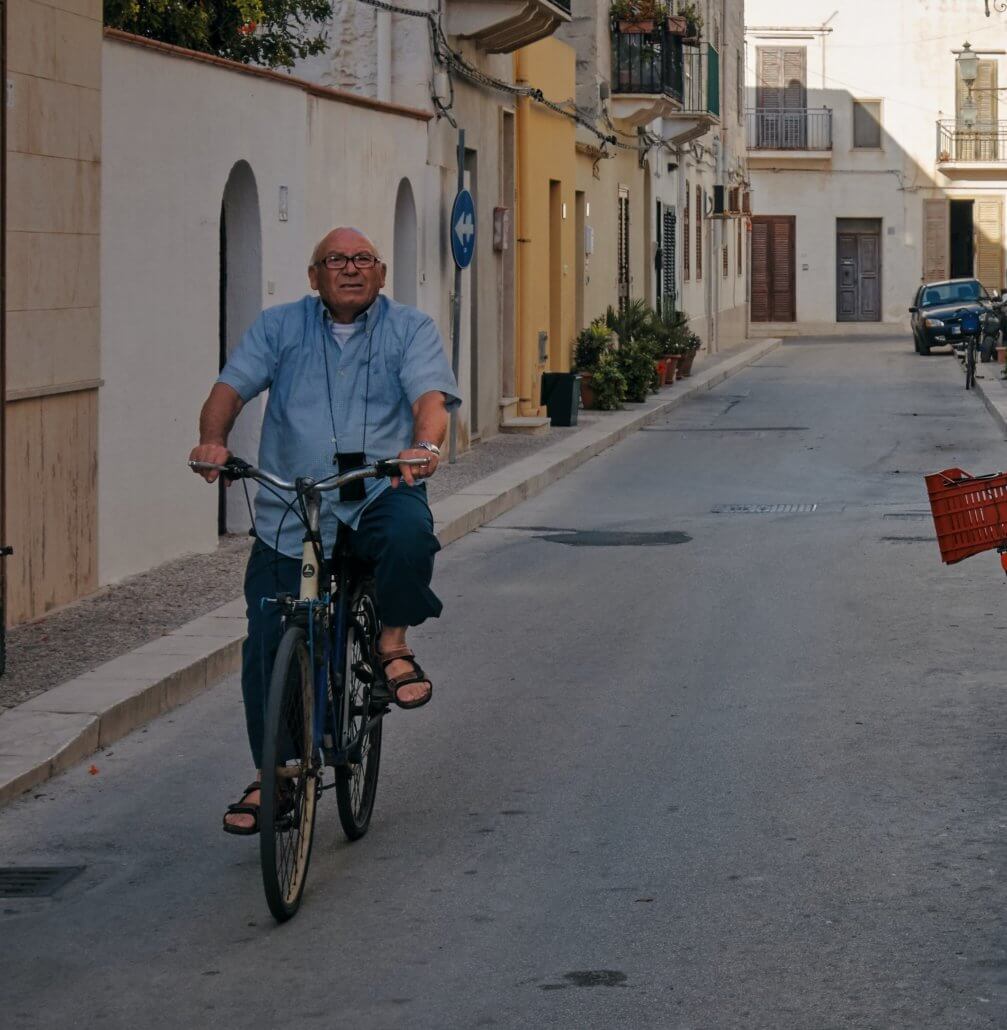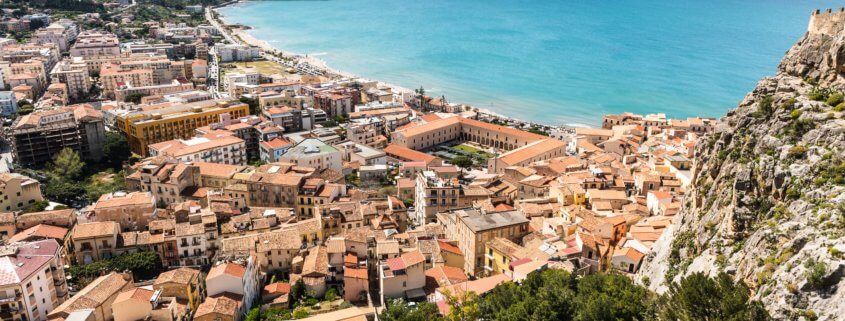Sicily Has Everything a Traveler Could Desire
Known for its delicious food, beautiful coastline, sandy beaches, and crystal clear water, Sicily has it all! Here Susan Bedford, a three-time Global Volunteer, gives us some insight into the culture of this fascinating region of Italy, and Global Volunteers’ newest partner community, Castelvetrano.
By Susan Bedford
Sicily has everything a traveler could desire: stunning scenery, beautiful beaches, charming villages, Baroque cities and churches, ancient ruins, friendly citizens, a mild, sunny climate. And, maybe most compelling of all, truly fabulous food! And don’t forget an active volcano!
Sicily’s location made it vulnerable to invasion. In turn, Phoenicians, Greeks, Romans, Byzantines, Arabs, Normans, Germans, Savoyards, French, British, and finally Italians all left their marks on this land. These influences can be seen in archaeological remnants and in Sicilian culture and food (and the occasional blue-eyed Sicilian) to this day.

Sicilian dinnerware is renowned 
Piazza Pretoria, Palermo 
Castelmola overlook
Service and Splendor in Castelvetrano
Sicily is blessed with a climate warm enough to provide a plethora of simple, fresh, and tasty ingredients. Vineyards, orange and lemon groves, and almond trees and olive farms can be found around almost every corner of the island, all contributing to its strong food culture. And in Global Volunteers’ partner community, you’re surrounded by the splendor of these national specialties. Those yummy, green Castelvetrano olives you find at the olive bar in your market, with their nutty, buttery flavor, are indeed from the area in which you can serve with Global Volunteers. Also famous in Sicily is Castelvetrano black bread, a round loaf called vastedda, with a characteristic toasted-coffee color on which sesame seeds shine. Nearby Trapani was once the center salt harvesting and of the tuna trade, and the fish throughout the island is justifiably renowned. Caponata, a tasty eggplant with tomatoes and capers, is ubiquitous, as are arancini, delicious little rice balls fried with a crispy coating and eaten as snacks. Gelato was born in Sicily, as was granite, a refreshing treat rather like Hawaiian shave ice, but one hundred times better. When you join Global Volunteers in Sicily, you’ll eat some of the best meals of your life, and you’ll feel good about it, knowing that you are eating the nutritionist-recommended Mediterranean diet.

Sea salt production at Trapani 
Biking as primary transportation 
Music fills the streets
When a weekend comes, there are many day trips within an hour or two of Castelvetrano. A favorite is destination is just 40 minutes away, the ruins of the ancient city of Segesta. Its Doric temple looks a lot like the Parthenon, but it stands alone in the midst of flower-filled fields, rolling hills, and farms. Instead of the noise of traffic, one hears birds chirping and the breeze caressing the trees. After a visit, drive a few miles (careful of the sheep you may meet on the road!) and have lunch at a beachfront restaurant looking out at the coast of North Africa. Another nearby destination is Erice, just over an hour away from Castelvetrano. This walled village with its imposing castle perched high on a hill overlooking the sea was mentioned in Virgil’s Aeneid and is widely considered one of the loveliest towns in Italy.

Statue of Beato Alberto, Erice 
Valley of the Temples, Agrigento 
Greek Theatre of Taormina 
Mount Etna, Adrano
Venturing farther onward you’ll find such places as Agrigento, where you can sip a drink in a fragrant garden gazing at the illuminated Greek ruins from the 6th century BCE crowning a nearby hill. Built on a high ridge facing the sea, the Valley of the Temples is magnificent, and standing gazing out at the azure sea framed by ancient limestone columns is unforgettable. Farther afield at Villa del Cassale, you’ll find the best-preserved Roman villa in the Mediterranean, including astoundingly colorful mosaics featuring young girls in bikinis fighting wild animals. Farther onward on the east coast of Sicily lies Syracusa with its well-preserved Roman amphitheater and golden sea walls built as protection against pirates. Taormina, perched on a hill 700 feet above the blue Mediterranean, has been a tourist destination and playground of the rich and famous since the 19th century. Writers and poets from Goethe to Capote fell captive to Taormina’s charms, and you will too. There is wonderful shopping on the winding street leading to the famous amphitheater. Taormina is also close to Mt. Etna, an active volcano with lovely vineyards on its slopes. All these places can be reached (at least in part) by good highways with minimal traffic, though driving in cities is challenging and parking there can be especially difficult.

When you leave Sicily you’ll take memories of all these magnificent sights and experiences, but most of all you’ll remember your time with the eager, enchanting students and townspeople, who love the “Americani” and are delighted to share their culture with you and learn about yours. Working with Global Volunteers rewards you with an understanding of Sicily, its people, and its culture that goes far beyond that of any tourist.
You may also like:
New Sicily Program Launched



 2020
2020 Global Volunteers 2020
Global Volunteers 2020
Leave a Reply
Want to join the discussion?Feel free to contribute!